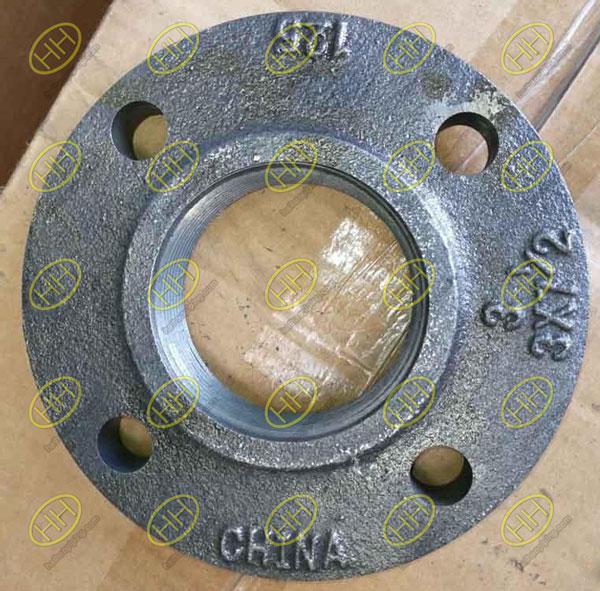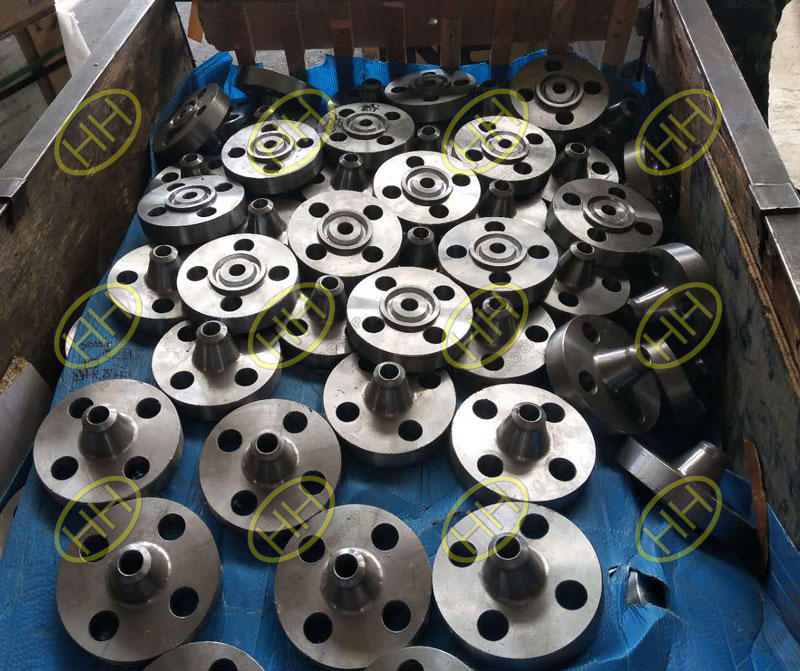The differences between forged flanges and cast flanges
Cast flanges can be manufactured in various kinds of complex shapes which are difficult to be obtained for the flanges which are produced by other manufacturing methods. Cast flanges have very low costs, which make them much cheaper than forged flanges. They have characteristics of the ideal surface’s finish which can be acquired without any surface treatment as well as being able to be easily formed. The shortcoming of cast flanges is that it is easy for them to have defects or that some parts of them are not compact, which makes cast flanges unable to be applied to the strong corrosion and high pressure conditions.

Casting Threaded Flange
Forged flanges are usually made by the forging equipment, and forged flanges can not have the complex shapes that the cast flanges own. However, the forged flanges have the more compact structures than the cast flanges, and the internal defects seldom happen on forged flanges. The forging process is widely used for workpieces such as the valve seat, the valve spool and the valve stem which have high requirements on quality. The forged valve body has a wide application under the strong corrosion or the high pressure conditions.

ANSI ASME B16.5 class 1500 A350 LF2 weld neck flanges
Although the tremendous development of the casting technology has been achieved and the computer technology has been used to optimize the structural geometrical design and the casting process, it is still extremely difficult to meet the requirements of harsh environments in nuclear power plants, thermal power plants or petrochemical industries, which makes the welding process needed. However, after welding, the overall quality and reliability of the casting become hard to be guaranteed. It is possible for the casting to have some internal defects which will damage its strength or corrosion resistance and are hard to be discovered.
In the solidification process, the differential shrinkage may cause the stress concentration problem, and the strength of the metal may be low when the metal comes close to its melting point. Under the combined action of the above two factors, the clear cracks or the hot tearing crack may occur on the cast flanges. The low casting temperature may lead to the cold shut on the cast flanges. The slag or the sand from the molten metal can cause the accumulated strains on the cast flanges. The poor casting conditions also may trigger some other defects on the cast flanges.
